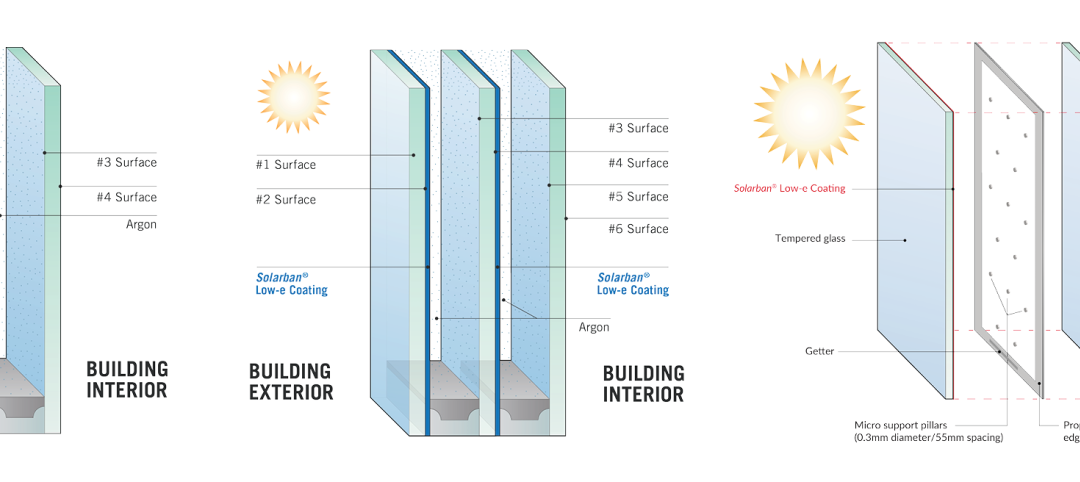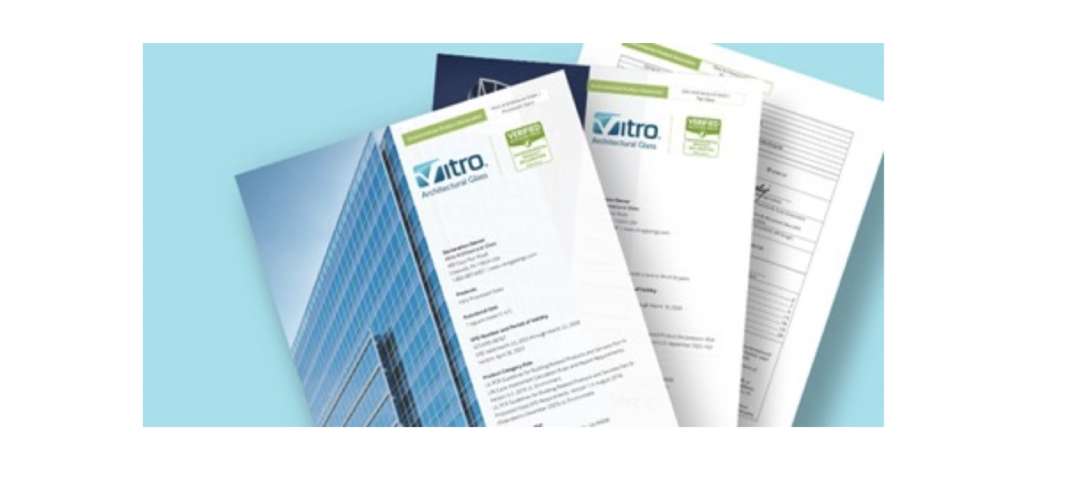Schaumburg, Ill. -- Coursework is now available through the AAMA FenestrationMasters™ professional certification program, which was launched last year by the American Architectural Manufacturers Association (AAMA). This nationwide program is targeted to professionals in the window, door, skylight, curtain wall, storefront and sloped glazing industries. The FenestrationMasters program offers training content based on consensus-based AAMA standards.
The coursework can be used for the purpose of training new hires, as an introduction to the fenestration industry or to provide further education, instruction and training to current employees. The broad scope of the coursework provides an introduction to the industry, as well as an education in a range of topics affecting the commercial and residential building products market segments.
Rich Walker, AAMA's president and CEO, states, “Additional education and certification is an effective way to ensure that employees are well-trained and knowledgeable, which puts companies in a strong position to compete for business by offering customers the benefit of a well-trained staff with a broad knowledge base.”
The program coursework covers a wide range of subjects, including performance standards, product and material types and code requirements. Coursework is accessed through MyWindowClass.com, which is owned and operated by the National Glass Association. The online education format allows professionals to complete the coursework at their own pace and convenience, simply through access to any computer with an Internet connection. There are two different credentials available through the program:
* Certified FenestrationMaster: To qualify for advanced certification, a four-year degree in engineering, architecture or applied sciences in addition to four years of full-time fenestration-related experience or six years of full-time experience is required. This credential requires completion of six levels of coursework and a certification exam.
* Certified FenestrationAssociate: To qualify for entry-level certification, a four-year degree and 1 year of full-time fenestration-related experience is required or three years of full-time fenestration-related experience. This credential requires completion of four levels of coursework and a certification exam.
Descriptions for currently available courses within levels 1 and 2 are outlined below.
Level 1
* Specifying Windows and Doors: Part I: History & Features
The evolution of window and door standards and code references and introduces AAMA/WDMA/CSA 101/I.S.2/A440-08, NAFS - North American Fenestration Standard/Specification for windows, doors, and skylights (the jointly published industry standard that is applicable for use in testing and rating fenestration products)
* Specifying Windows and Doors: Part II: Basic Performance Requirements
Basic performance requirements outlined in AAMA/WDMA/CSA 101/I.S.2/A440-08, NAFS - North American Fenestration Standard/Specification for windows, doors, and skylights and performance considerations, including structural loading, water penetration and air infiltration
* Specifying Windows and Doors: Part III: Window Testing
Testing requirements for windows, including minimum test sizes and other special and optional test requirements
* Specifying Windows and Doors: Part IV: Requirements for Materials and Exterior Side-Hinged Doors
The framing materials requirements dictated by AAMA/WDMA/CSA 101/I.S.2/A440-08, NAFS - North American Fenestration Standard/Specification for windows, doors, and skylights, as well as performance requirements for exterior side-hinged doors
* Specifying Windows and Doors: Part V: Verifying Performance through Certification
The importance of product certification and the role that certification plays in verifying quality and performance
* Glass Functionality, Performance, and Types
The uses and functionality of glass in commercial buildings, as well as manufacturing and fabrication processes for different types of glass and the applications for these products
* Fabricated Glass Solutions
Various kinds of fabricated glass solutions to enhance basic glass performance, including insulating units, safety glass and fire-rated glass, as well as methods of measuring and evaluating glass performance in order to make informed glass choices
* Installation Design Considerations
This course was developed as part of the InstallationMasters™ curriculum, and covers design considerations for both windows and doors.
* Types of Windows
This course was developed as part of the InstallationMasters curriculum, and covers all types of windows.
* Types of Exterior Glass Doors
This course was developed as part of the InstallationMasters curriculum, and covers hinged glass doors, dual action hinged glass doors and sliding glass doors.
Level 2
* Air and Water Leakage Resistance Testing: Part I
Comparison of AAMA/WDMA/CSA 101/I.S.2/A440-08, NAFS - North American Fenestration Standard/Specification for windows, doors, and skylights to the field testing documents (AAMA 502, 503 and 511) to define the appropriate water test pressure, test durations and water application necessary for a successful forensic water test
* Air and Water Leakage Resistance Testing: Part II
Evaluation of case studies, as well as procedural information on recreating the leak during a forensic water test
For more information regarding the FenestrationMasters program visit www.aamanet.org/FenestrationMasters. More information about AAMA and its activities can be found at www.aamanet.org.
Related Stories
Products and Materials | Aug 31, 2024
Top building products for August 2024
BD+C Editors break down August's top 15 building products, from waterproof wall panel systems to portable indoor pickleball surface solutions.
Glass and Glazing | Aug 16, 2024
The next generation of thermal glazing: How improving U-value can yield energy savings and reduce carbon emissions
The standards for energy-efficient construction and design have been raised. Due to the development of advanced low-e coatings for the interior surface and vacuum insulating technologies, architects now have more choices to improve U-values wherever enhanced thermal performance is needed to create eco-friendly spaces. These options can double or even triple thermal performance, resulting in annual energy savings and a positive return on carbon.
Curtain Wall | Aug 15, 2024
7 steps to investigating curtain wall leaks
It is common for significant curtain wall leakage to involve multiple variables. Therefore, a comprehensive multi-faceted investigation is required to determine the origin of leakage, according to building enclosure consultants Richard Aeck and John A. Rudisill with Rimkus.
Codes and Standards | May 10, 2024
Specification for field testing newly installed storefronts, curtain walls, sloped glazing systems updated
The Fenestration and Glazing Industry Alliance (FGIA) updated a specification establishing requirements for field testing newly installed storefronts, curtain walls, and sloped glazing systems.
75 Top Building Products | Apr 22, 2024
Enter today! BD+C's 75 Top Building Products for 2024
BD+C editors are now accepting submissions for the annual 75 Top Building Products awards. The winners will be featured in the November/December 2024 issue of Building Design+Construction.
75 Top Building Products | Dec 13, 2023
75 top building products for 2023
From a bladeless rooftop wind energy system, to a troffer light fixture with built-in continuous visible light disinfection, innovation is plentiful in Building Design+Construction's annual 75 Top Products report.
Glass and Glazing | Aug 25, 2023
Vitro Architectural Glass Lowers Embodied Carbon Further, Releases NEW Environmental Product Declarations
Vitro Architectural Glass (formerly PPG Glass) has published updated versions of its Environmental Product Declarations (EPDs) for both flat and processed glass. These updates reaffirm that Vitro’s glass products contain less embodied carbon than the industry standard for architectural glass products and indicate a lower embodied carbon value than previously reported in 2017 editions of these EPDs.
Fire-Rated Products | Aug 14, 2023
Free download: Fire-rated glazing 101 technical guide from the National Glass Association
The National Glass Association (NGA) is pleased to announce the publication of a new technical resource, Fire-Rated Glazing 101. This five-page document addresses how to incorporate fire-rated glazing systems in a manner that not only provides protection to building occupants from fire, but also considers other design goals, such as daylight, privacy and security.
Products and Materials | Jul 31, 2023
Top building products for July 2023
BD+C Editors break down 15 of the top building products this month, from cleanroom doors to window storm protection systems.
Sponsored | Building Enclosure Systems | May 16, 2023
4 steps to a better building enclosure
Dividing the outside environment from the interior, the building enclosure is one of the most important parts of the structure. The enclosure not only defines the building’s aesthetic, but also protects occupants from the elements and facilitates a comfortable, controlled climate. With dozens of components comprising the exterior assemblies, from foundation to cladding to roof, figuring out which concerns to address first can be daunting.
















